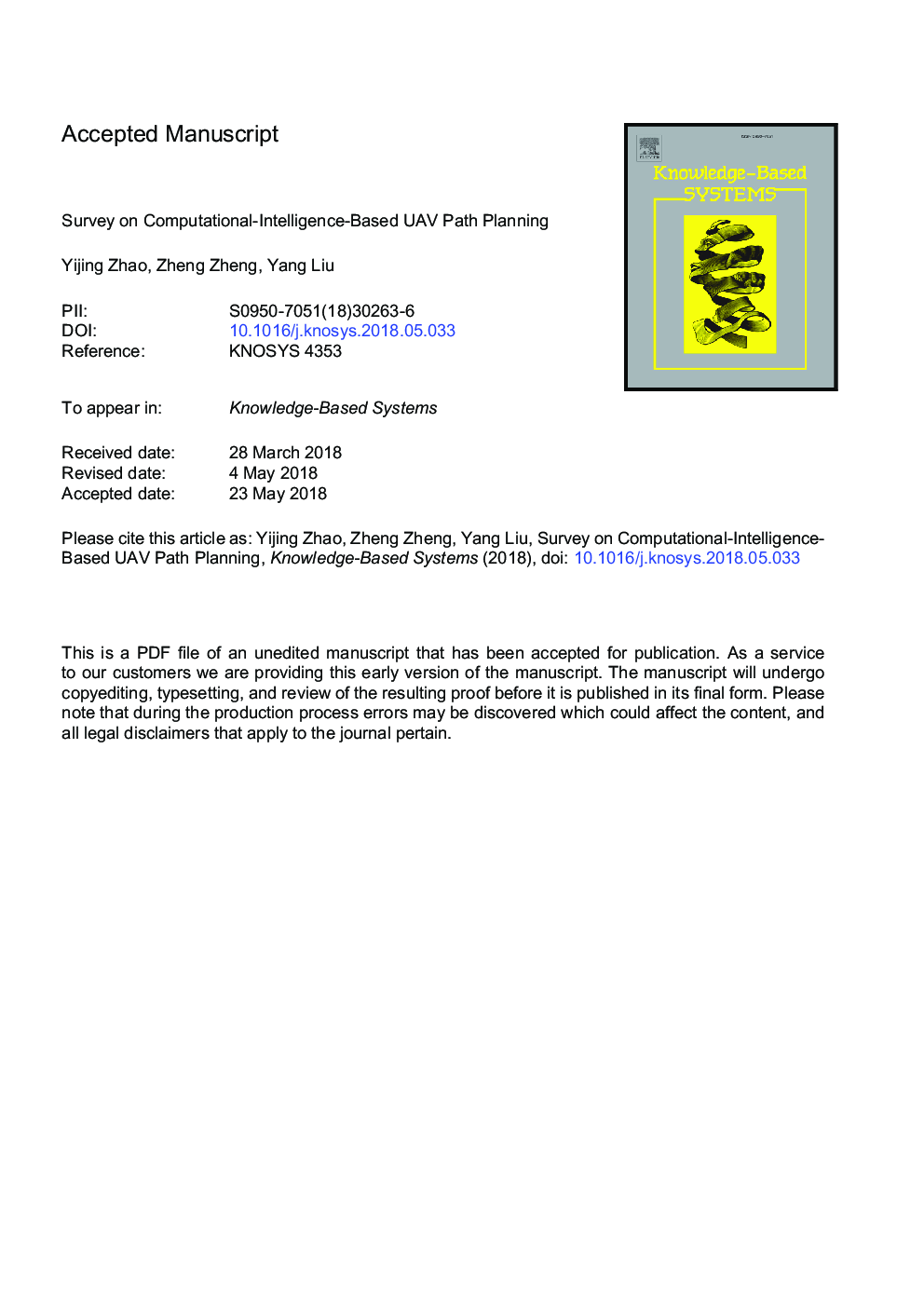| Article ID | Journal | Published Year | Pages | File Type |
|---|---|---|---|---|
| 6861275 | Knowledge-Based Systems | 2018 | 34 Pages |
Abstract
The key objective of unmanned aerial vehicle (UAV) path planning is to produce a flight path that connects a start state and a goal state while meeting the required constraints. Computational intelligence (CI) is a set of nature-inspired computational methodologies and approaches for addressing complex real-world problems for which mathematical or traditional modelling does not perform well. It has been applied in the field of UAVs since it can yield effective, accurate and rapid solutions. This article provides an overview of studies on UAV path planning based on CI methods published in major journals and conference proceedings. We survey relevant studies with respect to different CI algorithms utilized in UAV path planning, the types of time domain in UAV path planning, namely, offline and online, and the types of environment models, namely, 2D and 3D. It is observed that CI methods outperform traditional methods on online and 3D problems. The analysis is useful for identifying key results from UAV path planning research and is leveraged in this article to highlight trends and open issues.
Related Topics
Physical Sciences and Engineering
Computer Science
Artificial Intelligence
Authors
Yijing Zhao, Zheng Zheng, Yang Liu,
